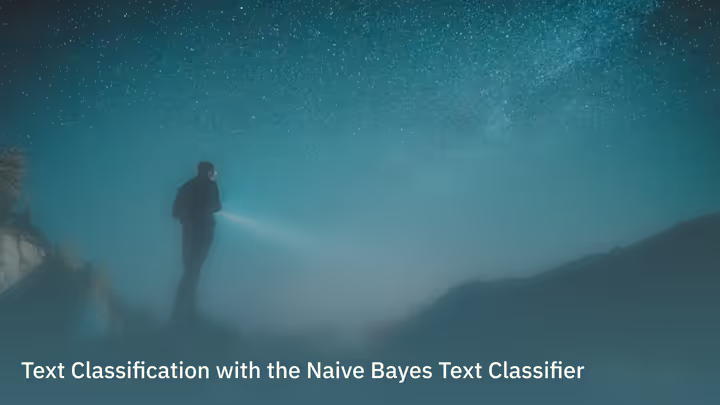
Adapting and Evolving: Year Two of Aggregata
As the second year of Aggregata draws to a close, we take the opportunity to review the changes and provide some insight into future developments.

As the second year of Aggregata draws to a close, we take the opportunity to review the changes and provide some insight into future developments.

Transparency is an important step for user trust in a product. Today we want to focus more on our use of machine learning methods for Aggregata.

Delve into the early steps of establishing a component library for designers and developers alike, while keeping common pain points in mind.

Over the past few weeks I've been experimenting with the Dialog element and the new Popover API and dabbled with some microinteractions to make every click a little more engaging.

Automatically answering questions about images is a powerful tool for making a variety of processes faster and more efficient. In this article, we introduce Matcha-Quarta, a neural network trained for this task.

Image segmentation is crucial for object recognition and advanced image processing, and the Kosmos-2 neural network enhances this by grounding text in the visual world, perceiving object descriptions, and associating them with their respective image regions. Today we will explore use cases of such a model.

Last week I had the privliege to spend three days in Berlin with my employer HERO Software at the WeAreDevelopers World Congress 2024. It was a great opportunity to learn from and network with other developers.

Learn how accessibility and its design patterns benefit businesses and users alike, and find practical resources and tools to improve your site's accessibility.

Actor-critic reinforcement learning is a significant advancement in the field of reinforcement learning. Actor-critic reinforcement learning combines the advantages of both policy-based and value-based reinforcement learning, allowing for more efficient and effective learning in complex environments. In this post, I would like to introduce this algorithm.

Dimension reduction is an increasingly important part of the learning process of machine learning programs as data sets grow larger. Today we will look at a linear transformation method on low dimensional vector spaces to potentially improve the learning process. Principal Component Analysis will be introduced for this purpose.

Don't leave your users behind - Learn how to design accessible user interfaces with a design system that builds accessibility in from the start and eliminates potential barriers.

As Aggregata continues to evolve, we're committed to providing the optimal platform for our content. Read more about our decision to move from Astro to Ghost as an significant step towards enabling a more feature-rich content experience.

Image captioning is important because it provides a textual representation of the content and context of an image, improving accessibility and understanding for all users, especially those with visual impairments. In this post, we introduce BLIP for this use case.

Sentiment analysis is an increasingly important part of the evaluation of news from social networks. In the following article, we would like to present a pretrained transformer that is tailored for this task: the Emotion Text Classifier.

Obsidian, a tool for building a "second brain" - a system for organising and managing information effectively. Learn how this free, open source platform can help you organise notes, connect ideas and potentially improve workflow efficiency.
Not all websites need to be dynamic. Discover the cost-efficiency, security and global accessibility benefits of static HTML. Learn how to recognise when static delivery is the right choice for your project.

The Naive Bayes classifier is a simple and efficient algorithm for classification tasks that assumes independence of the features. This post aims to introduce this algorithm to the reader.

Large amounts of data can be challenging for many reasons. Today, I will present an algorithm that can be used to reduce the size of a data set: Random Projections.

Visualise validation errors in your backend for input elements with Alpine.js and improve the user experience of your forms. Read more in this article.

T5 is a powerful language model capable of performing a wide range of text-to-text tasks, including text classification, language translation or text summarization. The aim of this post is to introduce this pretrained transformer to the reader.

The Arc Browser brings a breath of fresh air to the browser market and at the same time offers interesting features that could have a lasting impact on the way we browse the Internet. Read more in this article.

Optimizing a (complex) function can be a difficult task. Here I present a library which I use and which I think is a good way to solve such tasks. In addition, I will show corresponding tasks and an implementation of a comparatively simple optimization task as a usage example.

As in many other areas, ethical issues are necessary for the safe and fair use of various products. In this article, we will look at ethical issues related to machine learning.

To identify similar groups in unknown data and reduce complexity, clustering can be used. Here we describe the k-means algorithm that can be used for clustering.

Find out how you can implement dynamic imports with Alpine.js to speed up your website and optimize the user experience.

Learn how to use Astro as a flexible base for your next project in this article that takes you from setup to deployment.

In October 2022 we published our first article and in October 2023 we will not only review one year of Aggregata but also give an outlook on future projects.

Understanding Artificial Intelligence - In our latest article we give an insight into our first seminar and our experiences.

The purpose of this article is to introduce the reader to the basic topic of reinforcement learning. The introduction concretizes important terms and basic concepts used there.

There are a number of ways to solve a regression task. In this article we will describe how such a regression task can be solved using a neural network.

There are several classical algorithms to perform a classification. Here I describe an implementation using neural networks and my experiences with it.

Q-Learning was one of the first practical reinforcement learning algorithms. This post introduces this algorithm.

In this article, you'll learn how to use Alpine.js to manage both temporary and persistent states, and how to use it to optimize your user experience.

Decision trees alone are often not sufficient to perform a meaningful classification. Random forests represent an improvement of the decision trees. I am going to present this method in the following post.

Classification can be done in many different ways and with many different algorithms. Today I will introduce the K-Nearest-Neighbour classifier.

Today we'll give you an inside look at the design and technical implementation decisions behind Aggregata.

Often machine learning models are complex and difficult to understand. This article describes a method that visualizes clear structures and decision criteria: Decision Trees.

Event occurrence probabilities are often a complex problem to model. In this article, a basic method for this is presented: Logistic Regression.

Artificial intelligence is a capable technology with great advantages. However, it is also associated with risks and side effects. In this article you will learn what you need to be aware of when working with artificial intelligence.

This post is intended to introduce the reader to the basic topic of reinforcement learning. The introduction clarifies important terms and basic concepts that are used in Reinforcement Learning.

How can you use artificial intelligence to generate creative and valuable texts? In this post, you'll learn more about the opportunities and challenges of generative texts.

Semi supervised learning represents one of the four topics of machine learning. This post is intended to give an introduction to the topic.

Microsoft and OpenAI, based on the immense success of ChatGPT, present a new way to search the Internet for information, starting a competition for Google's domination of the Internet.

Unsupervised Learning represents one of the four topics of Machine Learning. This post aims to provide an introduction to the topic.

Supervised Learning represents one of the four topics of Machine Learning. This post is intended to provide an introduction to the topic.

Neural networks are a hotly debated topic. But what are they and how exactly do they work? Some of these questions are answered here.

Machine Learning is taking an increasingly important part in our lives. This post will explain why is likely a relevant concept in the future.

In this post, we'll show you how to use Alpine.js to visualize a list of products and automatically convert their prices.

The Deep Q network sometimes suffers from various problems. The problems are presented here and a solution for these problems is presented.

In this post, I dynamize a contact form using Alpine.js to incrementally enrich the user experience.

Deep Q-Networks sometimes need information from different time steps to converge quickly. The Deep Recurrent Q-Network represents one possibility for this.

How exactly does one perform hyperparameter optimization? What do you have to pay attention to there? What exactly does a visualization look like? There is an answer to all these questions here.

Artificial neural networks have achieved success in many fields. Here I present the first algorithm for training neural networks for reinforcement learning: the Deep Q-Network.

In the Big Data business, (co-)rellations are often useful to make decisions. Here is one easy method to find such information: Linear Regression.

To increase the interactivity of a production-ready PHP environment, I implemented Alpine.js for the first time. Here are my findings.